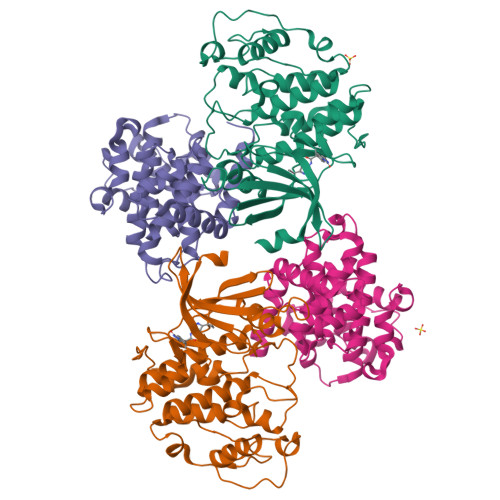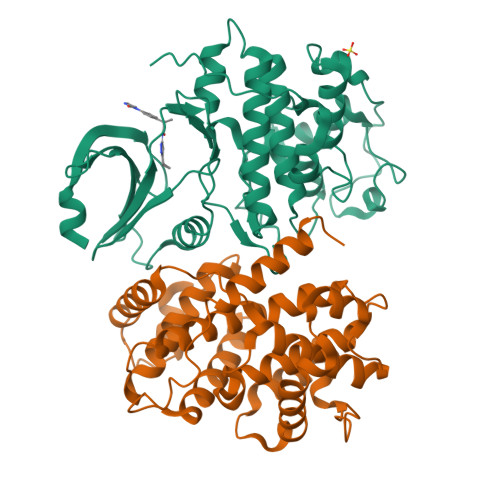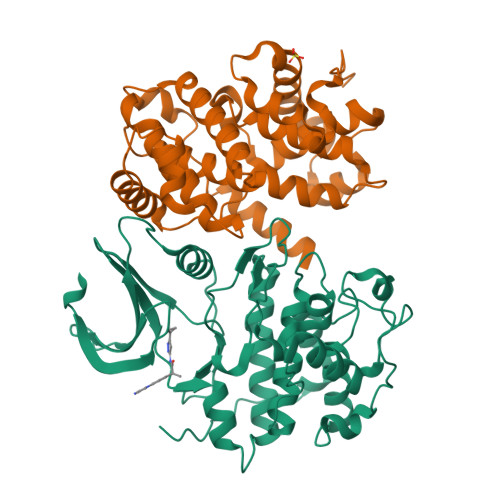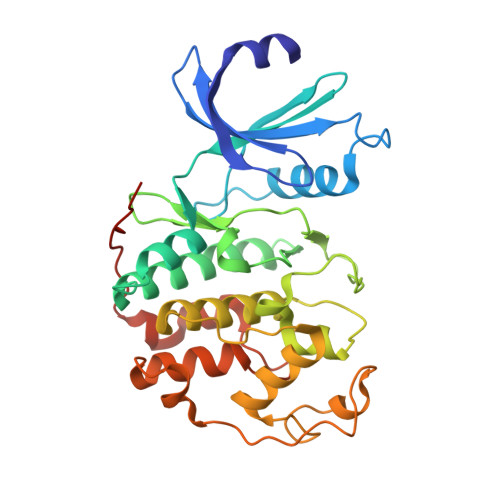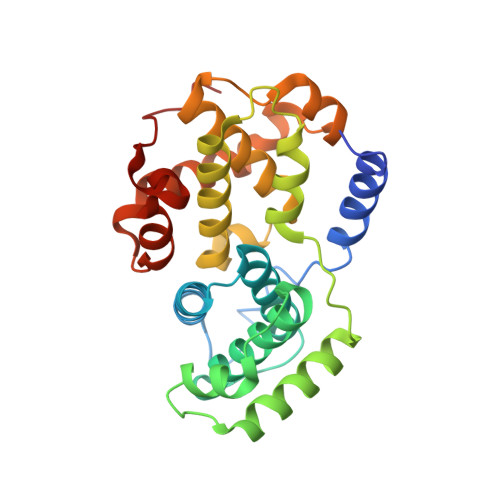3-Aminopyrazole Inhibitors of Cdk2-Cyclin a as Antitumor Agents. 2. Lead Optimization
Pevarello, P., Brasca, M.G., Orsini, P., Traquandi, G., Longo, A., Nesi, M., Orzi, F., Piutti, C., Sansonna, P., Varasi, M., Cameron, A., Vulpetti, A., Roletto, F., Alzani, R., Ciomei, M., Albanese, C., Pastori, W., Marsiglio, A., Pesenti, E., Fiorentini, F., Bischoff, J.R., Mercurio, C.(2005) J Med Chem 48: 2944
- PubMed: 15828833
- DOI: https://doi.org/10.1021/jm0408870
- Primary Citation of Related Structures:
2BPM - PubMed Abstract:
Inhibitors of cyclin-dependent kinases (CDK) such as CDK2/cyclin A-E are currently undergoing clinical trials to verify their potential as new anticancer agents. In a previous article we described the lead discovery process of a 3-aminopyrazole class of CDK2/cyclin A-E inhibitors. The endpoint of this process was PNU-292137, a compound endowed with in vivo antitumor activity in a mouse tumor xenograft model. We optimized this lead compound to improve some physicochemical properties, notably solubility and plasma protein binding. This lead optimization process brought us to the discovery of (2S)-N-(5-cyclopropyl-1H-pyrazol-3-yl)-2-[4-(2-oxo-1-pyrrolidinyl)phenyl]propanamide (PHA-533533, 13), a compound with a balanced activity vs druglike profile. Compound 13 inhibited CDK2/cyclin A with a K(i) of 31 nM, counteracting tumor cell proliferation of different cell lines with an IC(50) in the submicromolar range. Solubility was improved more than 10 times over the starting lead, while plasma protein binding was decreased from 99% to 74%. With exploitation of this globally enhanced in vitro profile, 13 was more active than PNU-292137 in vivo in the A2780 xenograft model showing a tumor growth inhibition of 70%. Proof of mechanism of action was obtained in vivo by immunohistochemical analysis of tumor slices of 13-treated vs untreated animals.
Organizational Affiliation:
Department Chemistry, Nerviano Medical Sciences, BU-Oncology and BU-Preclinical Science, Viale Pasteur 10, 20014 Nerviano (MI), Italy. paolo.pevarello@nervianoms.com








